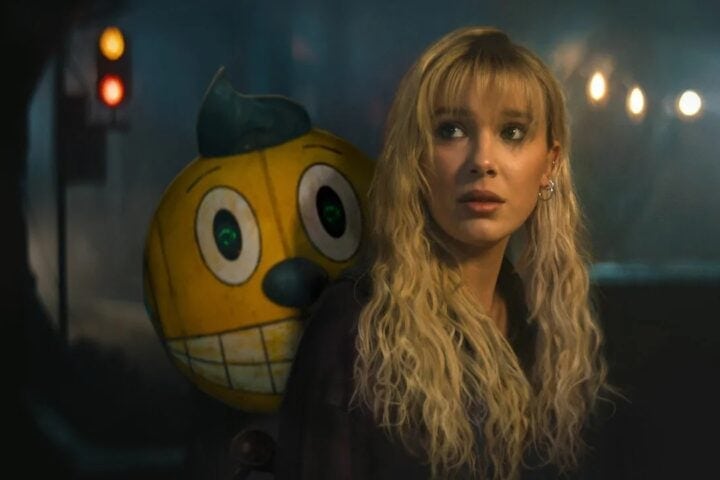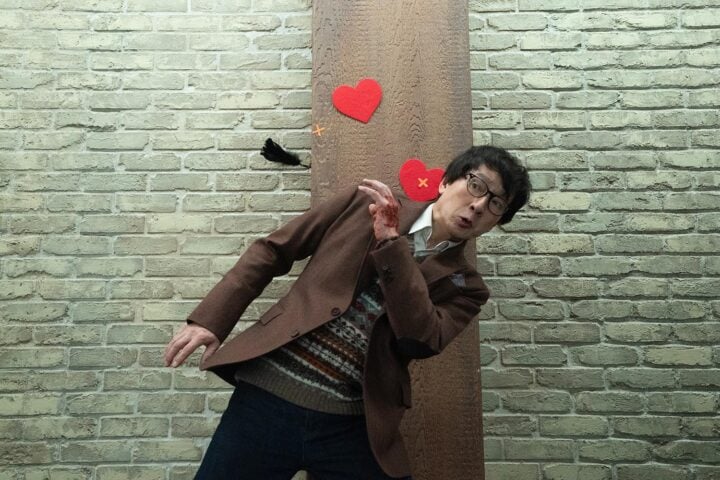“Anything Goes” is the opening refrain of Indiana Jones and the Temple of Doom, as Kate Capshaw’s Willie sassily steps in front of the title card while singing a Mandarin-language version of the Cole Porter showtune. And then Spielberg’s camera follows Capshaw into the mouth of a dragon where other chorus girls await to tap dance amid falling glitter, at one point defying gravity by kicking their way out of the splits.
What is this, an action picture or Josef Von Sternberg’s Blonde Venus? The opening turns out to be a red herring in many ways, among them the fact that the rest of the film is a great deal darker than the other Indy films, and not simply because it spends most of its running time where the sun don’t shine. But it does at least convey the notion that, whereas Raiders of the Lost Ark was, despite being a throwback, a respectable genre homage-cum-update (one that could get nominated for a best picture Oscar without raising an eyebrow), Temple of Doom doesn’t so much pay tribute to the serial adventures of yore as it embodies them. Here, frivolity and evil blithely coexist—and women are a lot more likely to scream than win drinking contests.
Spielberg has distanced himself from Temple of Doom’s unfettered anti-P.C. overtones and admits that its his least favorite of the original trilogy, but the reality is that this is the film that comes closest to reflecting the racism, sexism, and jingoism that fuelled most of the serials that originally sparked Spielberg and George Lucas’s impressionable young imaginations. Thereby, Temple of Doom can be viewed as an exorcism of sorts. If it wasn’t the last time he’d put his (mostly young) audience of thrill-seekers through his wringer of grue, it was the last time he could do it with a PG rating. (The film’s literally heart-stopping pagan ritual has been widely documented as the probable line in the sand for the MPAA, who had already threatened to slap R ratings on both Lost Ark’s exploding head and Poltergeist’s face-ripping fantasy.)
I know it’s a little bit funny to call Temple of Doom the “exorcism” of the director’s golden age, considering that Lost Ark already gave Hollywood’s most famed Jewish artist the chance to spectacularly orchestrate the face-melting demise of the Nazi elite at no less than God’s own hand. But God is a special effect. In Temple of Doom, the even brighter force, marquee idol Harrison Ford, drinks blood and crosses over, if only for a few scenes, to the dark side. If that doesn’t handily summarize the tone of Spielberg himself directing an escapist summer movie about child enslavement, death by lava, imperialism and exploitation of the Third World, and a dessert tray bearing chilled monkey brains, I don’t know what does.
Perhaps the reason Temple of Doom is regarded as inferior to either Lost Ark or Indiana Jones and the Last Crusade is as simple as its religious context. Bluntly, the bookends remain resolutely Judeo-Christian. Here, Indy is forced to give serious consideration to the legitimacy of religious conventions outside of that tradition. When Indy, Willie, and Chinese boy sidekick Short Round (Ke Huy Quan) jump from a sinking plane and find themselves in deepest India, they instantly wash up on the shore of a broken town. The residents have been robbed of both their children and their magic stones, which they believe carry the power of the god Shiva, at the hands of the pagan Thuggee cult, which hasn’t been heard from in over 100 years. (A visiting British officer smugly posits that his country’s military wiped out the last of them.) “Magic stones?” Willie scoffs, and accuses Indy of not admitting his true motivation for trying to retrieve the village’s children and stones: fortune and glory (the stones contain diamonds).
So while Lost Ark and Last Crusade can go on about their globe-trotting business with the religious implications already accepted as a given for the protagonists and antagonists alike, Temple of Doom juggles not only Christian conquest, but Hinduism and paganism, not to mention the Hollywood’s history of xenophobia. The film at first call humorous attention to that (“Anything Goes” and “I had bugs for lunch”) before submitting full-throttle to the genre’s racisms. (Even John Forbes Nash wouldn’t be able to keep count of all the anonymous swarthy Indian assassins who are unceremoniously maimed to death during the film’s running time.)
Ultimately, the prospect proves too much for Spielberg to keep control over, and the sensation begins to spill over in Temple of Doom’s supremely white-knuckled final half-hour, in which mine-shaft rollercoaster rides, in-cave tidal waves, and mile-long wood suspension bridges all begin to obfuscate the horrifying images of children chained together and whipped while they’re forced to dig for the remaining magic stones. Just as Indy crosses over into the nightmarish waking death in the middle of the film, Spielberg himself must’ve worked himself into a maniacal trance making Temple of Doom. Anything goes, indeed.
Since 2001, we've brought you uncompromising, candid takes on the world of film, music, television, video games, theater, and more. Independently owned and operated publications like Slant have been hit hard in recent years, but we’re committed to keeping our content free and accessible—meaning no paywalls or fees.
If you like what we do, please consider subscribing to our Patreon or making a donation.






